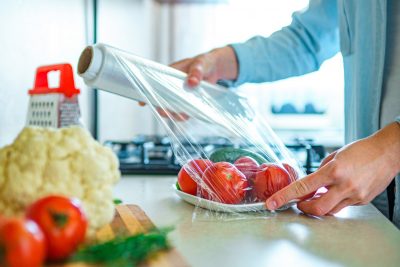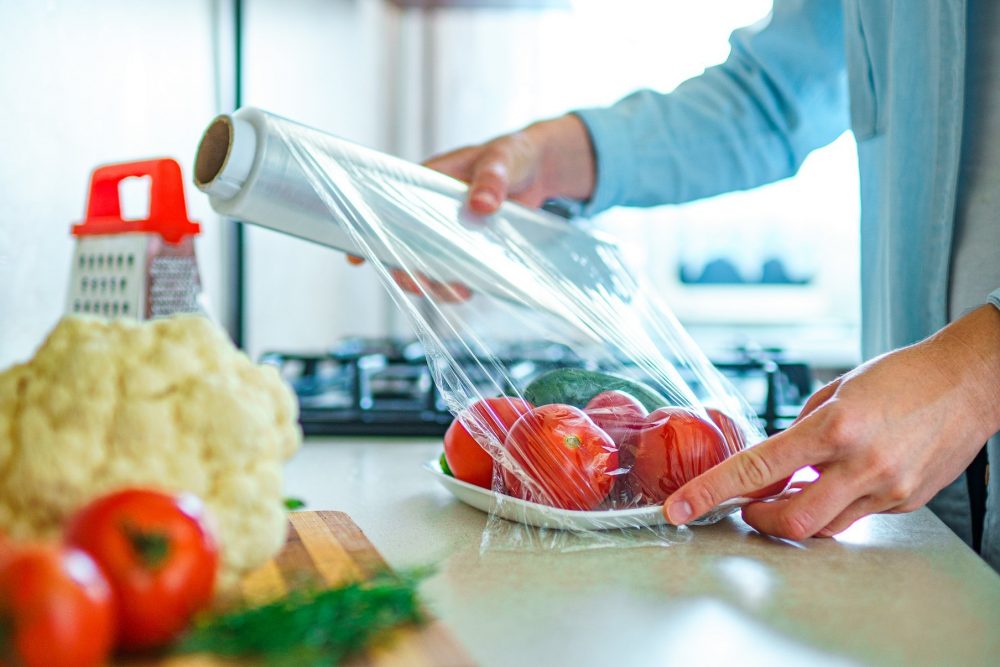Natural and edible alternatives to plastic wrap.


Date of publication 1 June 2020
Authors Gheorghita, Roxana; Gutt, Gheorghe; Amariei, Sonia.
Sources The Use of Edible Films Based on Sodium Alginate in Meat Product Packaging: An Eco-Friendly Alternative to Conventional Plastic Materials (2020) Coatings : 10 (DocId: 2) 166.
Abstract
Abstract: The amount of plastics used globally today exceeds 300 million tonnes annually, with an alarming annual growth. The final result is that plastic packaging is thrown into the environment, and the problem of waste is increasing every year. A real alternative is the use bio-based polymer packaging materials. Research carried out in the laboratory context and products tested at the industrial level have confirmed the success of replacing plastic-based packaging with new, edible or completely biodegradable foils. Of the polysaccharides used to obtain edible materials, sodium alginate has the ability to form films with certain specific properties: resistance, gloss, flexibility, water solubility, low permeability to O-2 and vapors, and tasteless or odorless. Initially used as coatings for perishable or cut fresh fruits and vegetables, these sodium alginate materials can be applied to a wide range of foods, especially in the meat industry. Used to cover meat products, sodium alginate films prevent mass loss and degradation of color and texture. The addition of essential oils prevents microbial contamination with Escherichia coli, Salmonella enterica, Listeria monocytogenes, or Botrytis cinerea. The obtained results promote the substitution of plastic packaging with natural materials based on biopolymers and, implicitly, of sodium alginate, with or without other natural additions. These natural materials have become the packaging of the future. The SeaCleaners’ View : Alginate-based films were already developed before the war. Alginate production is based on the extraction of laminar type algae. Protective films on food A renewable but not sustainable material. How to protect the edible protective film?
It is therefore a rediscovered innovation. Technically, the alginate film is made from the native polysaccharide, a molecule from the complex sugar family, and additives to make it water-resistant, based on calcium and glycerol. These ancient applications gave way to post-war petrochemical plastic films. Its only remaining application is in the field of dressing (Algosteril©) woven on the basis of extruded alginate fibres.
Alginate is one of the major constituents of the cell walls of brown algae. For reasons of productivity, laminar algae are used as raw material. They are harvested from wild deposits throughout the world, mainly in cold waters. Currently, approximately 30,000 tons of alginate are produced from 450,000 tons of fresh kelp. The purchase prices of these algae are very low, which explains the absence of cultivation even though the technology exists. Only Laminaria japonica is cultivated in Asia, but for use as a vegetable algae, therefore with a higher added value.
This approach to food protection is already used for some fresh products with vegetable waxes or plant polysaccharides. Hygiene is one of the criteria, but gas exchanges are also important to manage for the better conservation of the products. The plastic films of current packaging have been the subject of highly technical developments to provide these characteristics. They are still far from being available for alginate films.
Alginates are currently used mainly in the food industry as thickeners. There is no excess production. If alginate-based packaging films enter the market, the demand for this material will increase sharply. Existing wild stocks will not be sufficient without the risk of drastically reducing natural algal populations. Cultivation is not possible at present because the extra cost would not be compatible with the application.
This is unfortunately the weak point of this approach that we cannot ignore. This aspect is the subject of only a short sentence in the article as these authors specify that a solution will have to be found to ensure the hygiene of the edible film during transport. Perhaps by a plastic film? To end on a more positive note, alginate films are totally biodegradable. This characteristic is in itself an already very interesting asset. This waste could even be used in animal feed. However, the raw material resource being very limited, for the moment only niche applications are conceivable.
Comments area